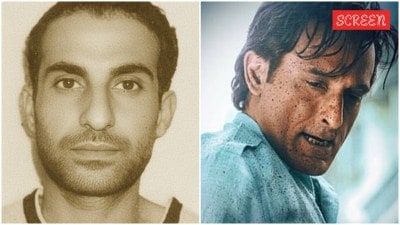RSS chief Mohan Bhagwat releases book on 1965 war hero Abdul Hamid: What was his role in the battle?
On Monday, Rashtriya Swayamsevak Sangh chief Mohan Bhagwat visited the native village of Hamid, Dhamupur, where he released a book on Hamid titled ‘Mere Papa Paramvir’ and another book titled ‘Bharat ka Musalman’.
 CQMH Abdul Hamid's statue at Param Yodha Sthal (section for Param Vir Chakra recipients), National War Memorial, New Delhi. (Photo: Wikimedia Commons)
CQMH Abdul Hamid's statue at Param Yodha Sthal (section for Param Vir Chakra recipients), National War Memorial, New Delhi. (Photo: Wikimedia Commons)Born on July 1, 1933, Company Quarter Master Havildar (CQMH) Abdul Hamid laid his life down while fighting Pakistan Army’s Patton tanks in the Battle of Asal Uttar — one of the largest tank battles fought during the 1965 India-Pakistan War. Hamid was awarded Param Vir Chakra — India’s highest gallantry award — posthumously.
On Monday, Rashtriya Swayamsevak Sangh chief Mohan Bhagwat visited the native village of Hamid, Dhamupur, where he released a book on Hamid titled ‘Mere Papa Paramvir’ and another book titled ‘Bharat ka Musalman’.
Here is a look at Hamid’s contribution.
But first, what was the Battle of Asal Uttar?
Situated in Punjab, Asal Uttar is quite close to the India-Pakistan border and around seven kilometres away from the town of Khem Karan.
In September 1965 — almost a month after the war broke out — Pakistan Army’s 1 Armoured Division launched an offensive by crossing the border and capturing many parts of Khem Karan. They aimed to reach the bridge over the Beas River, and cut off large areas of Punjab, including Amritsar, from the rest of India.
The offensive caught India’s 4th Mountain Division, which was deployed near Khem Karan, by surprise, and was forced to fall back. However, the situation quickly turned around after Western Army Commander, Lt Gen Harbaksh Singh, visited the 4th Mountain Division headquarters. He advised stout defence of the Asal Uttar road junction, and in addition, moved 2nd Armoured Brigade to the area to dodge any Pakistani armoured attack.
The battle took place between September 8 and September 10, and resulted in the decimation of Pakistan’s offence. The Pakistan Army lost 97 Patton tanks during the battle. Moreover, one entire armoured regiment of Pakistan and its commanding officer surrendered to the Indian Army.
But the town of Khem Karan remained under Pakistani occupation till the ceasefire was announced. It was returned to India in exchange for Indian-occupied areas in Pakistan.
What was Hamid’s contribution?
At the time, Hamid was serving with the 4th Grenadiers Battalion of the Indian Army, and he was deployed on the outskirts of Chima village, located on the Amritsar-Khem Karan road. He was leading a detachment of Recoilless Guns, which was hunting for enemy tanks in the fields of villages around Asal Uttar.
On September 10, Hamid found four Pakistani Patton tanks and fired at them from near point-blank range. When three of the tanks were destroyed, one was disabled. In doing so, Hamid came under fire from another Pakistani tank and lost his life.
For his bravery, Hamid was later awarded the Param Vir Chakra. The site of his death is now part of a war memorial. A captured Pakistani Patton tank stands guard at the entrance of the building, with its turret down, as a tribute to the Indian soldiers who fought and died in the battle.
- 01
- 02
- 03
- 04
- 05






































